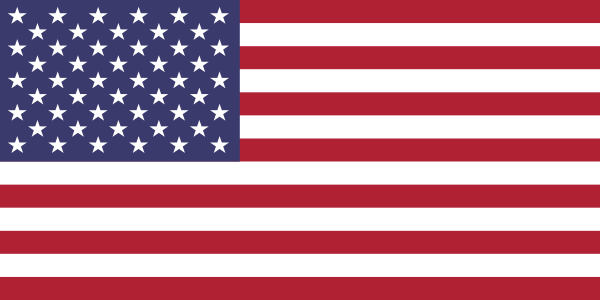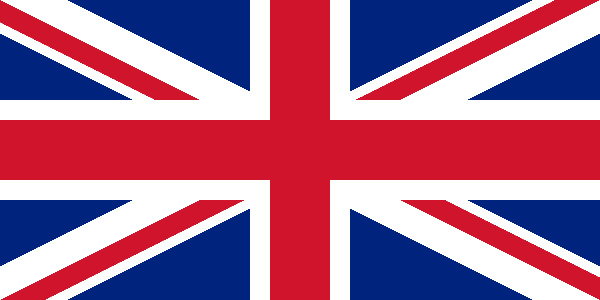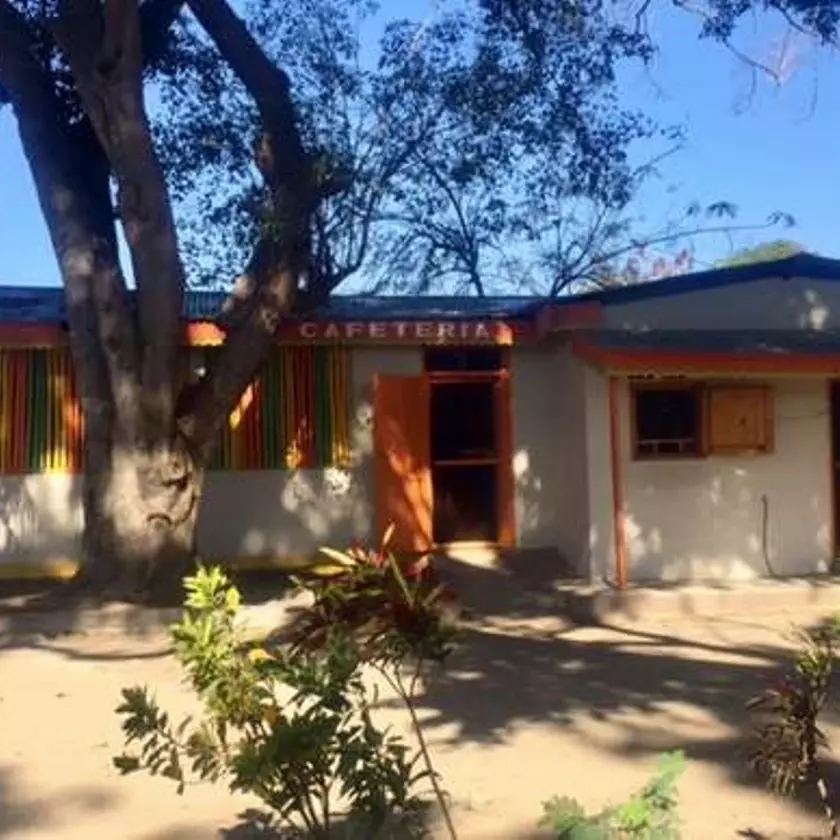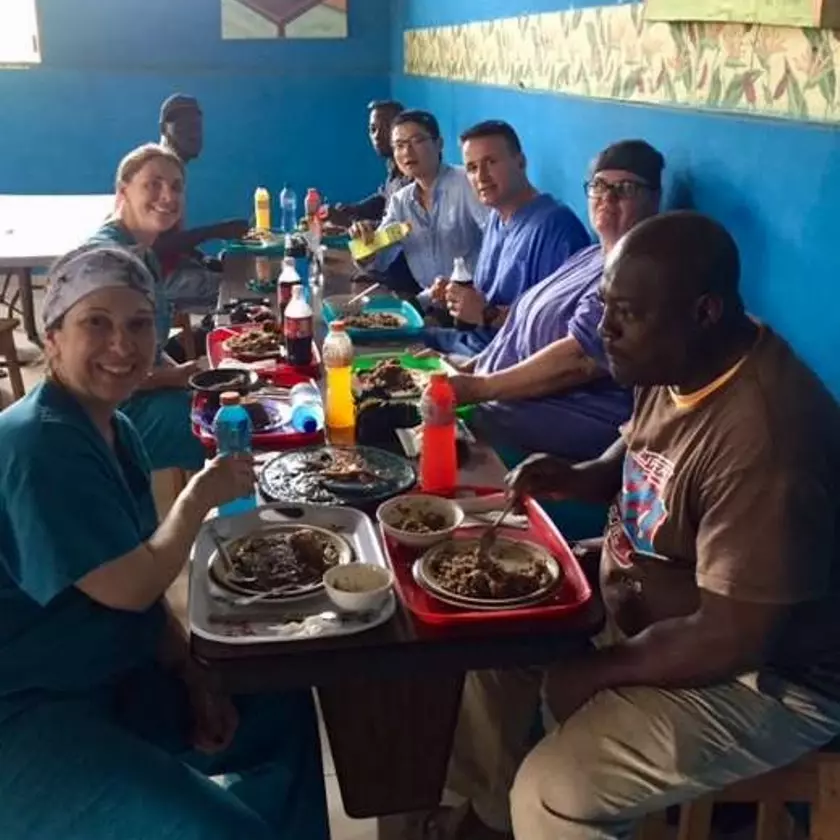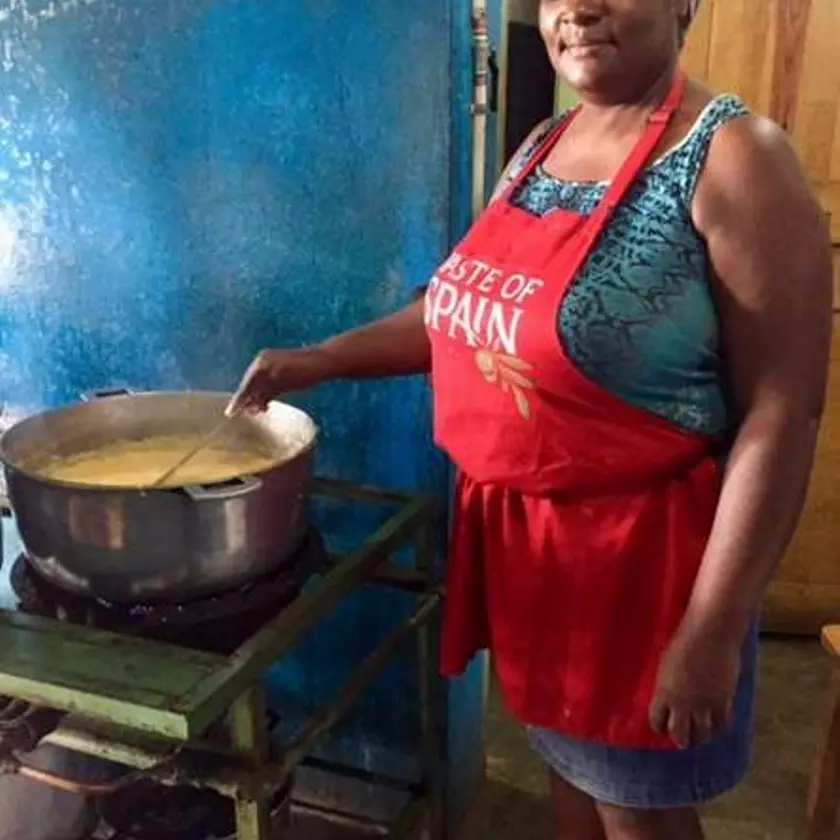One Body Many Parts- Part 3
The Cafeteria
'Manje' - it's one of those versatile Creole words, meaning 'food', 'eat', 'meal' or 'dine'. In a busy hospital which serves a couple of hundred patients a day and has a staff of 250, having somewhere which serves nutritious food and has the space to sit and eat is important.
The hospital first opened 10 years ago, but it wasn't until 3 years ago that the cafeteria was born. Before the cafeteria's opening, staff, patients and their families would have to either bring their own food or buy from the street sellers who had previously been allowed into the hospital grounds. To avoid the street food stalls turning into a bit of a market place on the hospital site, and to give hospital staff,patients and their families more nutritious options, the cafeteria was installed in 2014.
The cafeteria is open 7 days a week from 7am until 10pm and will typically sell an average of 760 plates of food a week, with busy weeks selling over 1000 plates.
I spoke to Jocelyne, the cafeteria manager, about her typical day which begins at 7am with preparing for and serving breakfast. For breakfast, the cafeteria serves plantain, maïs (a corn-based dish), spaghetti and sandwiches. After the breakfast service is over, the cafeteria staff prepare for the lunch rush where chicken, rice and beans, and legumes(a kind of beef and vegetable stew) are served with a salad garnish. Jocelyne's shift finishes at 5pm where she hands over to the evening staff who will prepare and serve the same kind of food for dinner until 10pm.
The cafeteria works by customers ordering food and drink through the hatch, and then waiting in the seating area to receive the order. Customers can either take away their order in polystyrene boxes or sit and chat at the cafeteria's long tables. I know from the experience of working within a team here and seeing the visiting teams, that the opportunity to sit in a quiet, calm space and debrief on the morning, is always much appreciated.
In Haiti's permanently hot weather, it is so nice to have cold drinks, and vital to serve bottles of drinking water. On the days where the labourers were working on the kitchen and garden with the St John's team, the sachets of water from the cafeteria were in high demand and we were ordering 25 sachets at a time!
The cafeteria has made a huge difference to everyone who uses the hospital. In contrast to the street food, the cafeteria offers a menu devised with nutritional advice from hospital staff and is cooked in a hygienic environment. The place itself also offers shade, and a clean, calm space away from the dusty streets.
Not only has the food and environment benefited the staff, patients and families, but the cafeteria is also the single best profit-making area of the hospital. It doesn't make the most money, but in terms of the ratio of expenditure to profit, the cafeteria has been a roaring success, and means that the money generated can go back into the hospital.

